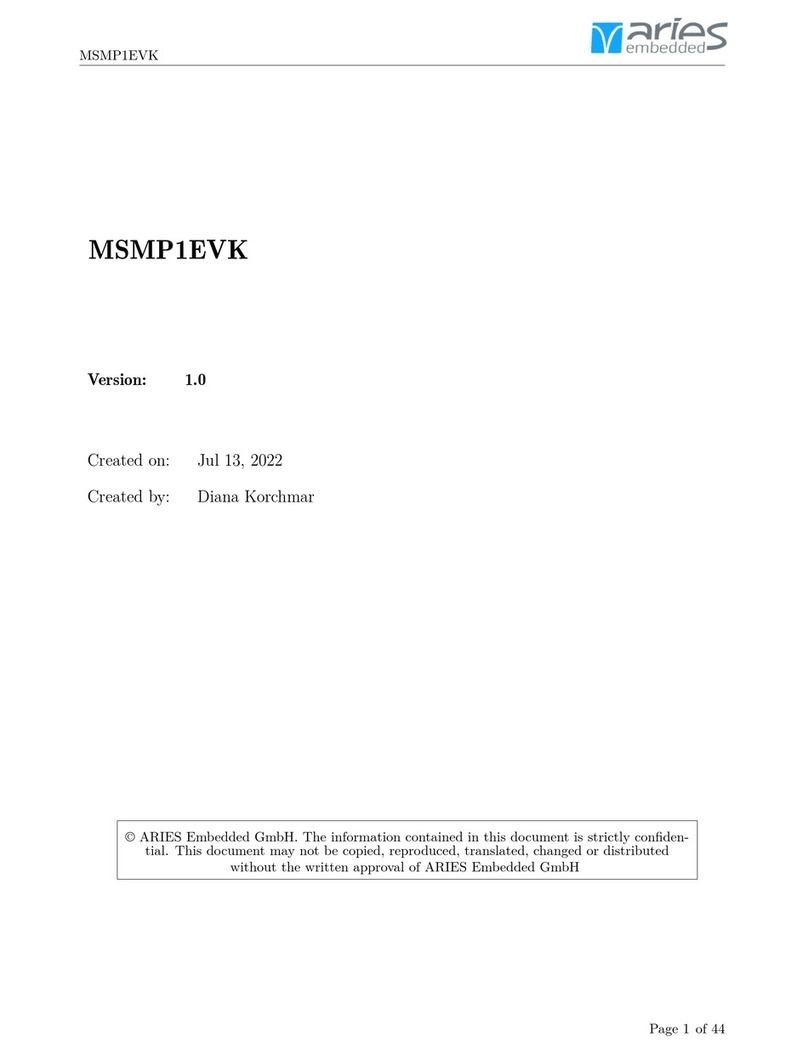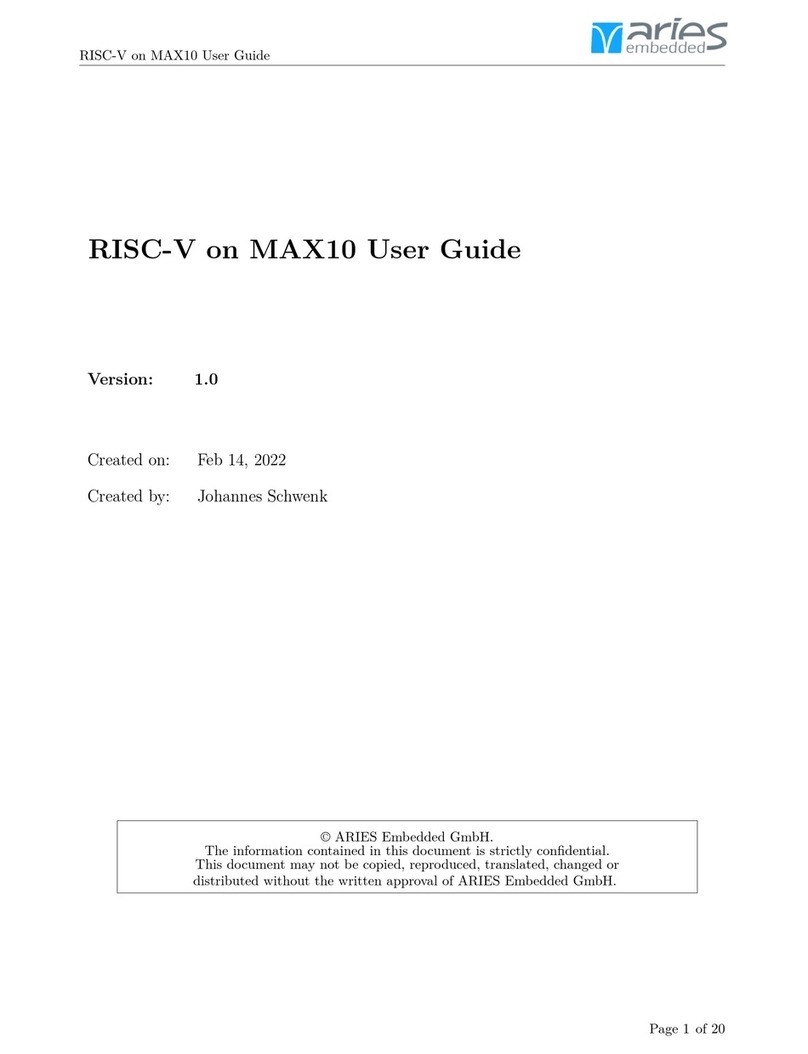
M100PF Hardware Manual
CONTENTS
1 About this manual 4
1.1 Imprint ................................................ 4
1.2 Disclaimer ............................................... 4
1.3 Copyright ............................................... 5
1.4 Registered Trademarks ........................................ 5
1.5 Care and Maintenance ........................................ 5
1.6 Change Log .............................................. 5
2 Overview 6
2.1 M100PF ................................................ 6
2.2 Feature Set .............................................. 7
2.3 Block Diagram ............................................ 8
2.4 Dimensions .............................................. 9
2.5 Part Overview ............................................ 10
2.6 Handling Recommendations ..................................... 11
3 Resources 12
3.1 Components .............................................. 12
3.1.1 FPGA ............................................. 12
3.1.2 DDR3-RAM ......................................... 12
3.1.3 e.MMC Flash ......................................... 14
3.1.4 SPI NOR Flash ........................................ 14
3.1.5 PMIC ............................................. 14
3.1.6 IO-Expander ......................................... 14
3.1.7 PIC Microcontroller ..................................... 15
3.1.8 RTCC ............................................. 15
3.1.9 SERDES ........................................... 15
3.2 SPI Configuration and Programming ................................ 16
3.3 Clocking ................................................ 16
3.4 I2C ................................................... 16
3.5 JTAG ................................................. 18
3.6 UART ................................................. 18
3.7 Pin Out ................................................ 18
3.7.1 CAN .............................................. 18
3.7.2 Ethernet ............................................ 19
3.7.3 SD Card ............................................ 19
3.7.4 GPIO ............................................. 20
3.7.5 Samtec Connector ...................................... 21
3.7.6 Connector J1 ......................................... 21
3.7.7 Connector J2 ......................................... 23
CONTENTS Page 2 of 24





























